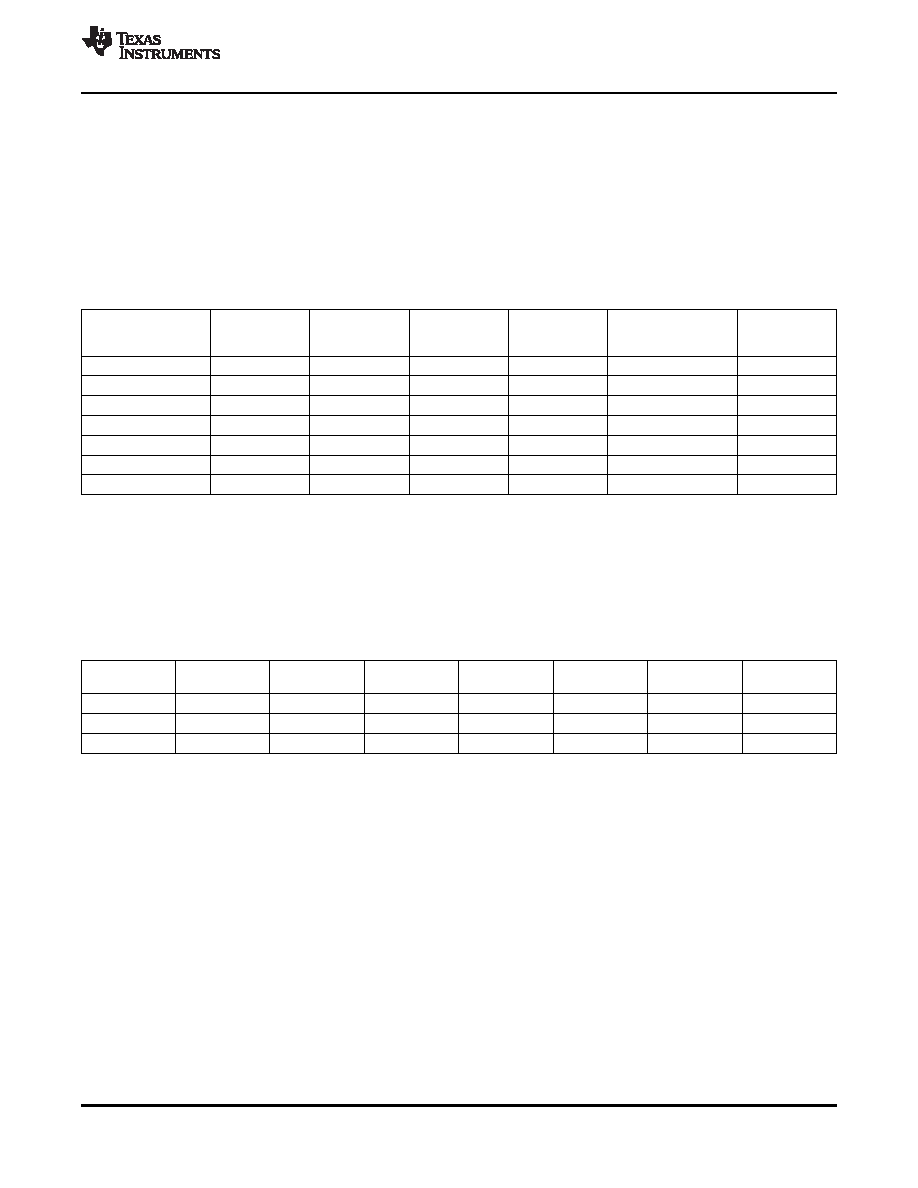- 您現(xiàn)在的位置:買賣IC網(wǎng) > PDF目錄98306 > TVP5158PNP (TEXAS INSTRUMENTS INC) COLOR SIGNAL DECODER, PQFP128 PDF資料下載
參數(shù)資料
| 型號: | TVP5158PNP |
| 廠商: | TEXAS INSTRUMENTS INC |
| 元件分類: | 顏色信號轉(zhuǎn)換 |
| 英文描述: | COLOR SIGNAL DECODER, PQFP128 |
| 封裝: | GREEN, PLASTIC, HTQFP-128 |
| 文件頁數(shù): | 25/108頁 |
| 文件大小: | 1395K |
| 代理商: | TVP5158PNP |
第1頁第2頁第3頁第4頁第5頁第6頁第7頁第8頁第9頁第10頁第11頁第12頁第13頁第14頁第15頁第16頁第17頁第18頁第19頁第20頁第21頁第22頁第23頁第24頁當(dāng)前第25頁第26頁第27頁第28頁第29頁第30頁第31頁第32頁第33頁第34頁第35頁第36頁第37頁第38頁第39頁第40頁第41頁第42頁第43頁第44頁第45頁第46頁第47頁第48頁第49頁第50頁第51頁第52頁第53頁第54頁第55頁第56頁第57頁第58頁第59頁第60頁第61頁第62頁第63頁第64頁第65頁第66頁第67頁第68頁第69頁第70頁第71頁第72頁第73頁第74頁第75頁第76頁第77頁第78頁第79頁第80頁第81頁第82頁第83頁第84頁第85頁第86頁第87頁第88頁第89頁第90頁第91頁第92頁第93頁第94頁第95頁第96頁第97頁第98頁第99頁第100頁第101頁第102頁第103頁第104頁第105頁第106頁第107頁第108頁

SLES243E
– JULY 2009 – REVISED MARCH 2011
3.8
Output Formatter
The output formatter is responsible for generating the output digital video stream. Table 3-4 provides a
summary of line frequencies, data rates, and pixel counts for different input standards. TVP5158 supports
non-interleaved output mode, pixel-interleaved output mode and line-interleaved output mode. The
non-interleaved mode is similar to the TVP5154A device, except that a single fixed clock output is used. In
the interleaved modes, the video output data from multiple decoder channels are multiplexed together and
then output to a single 8-bit or 16-bit port. The video output data from selected channels can be
interleaved on a pixel or line basis.
Table 3-4. Summary of Line Frequencies, Data Rates and Pixel Counts for Different Standards
Pixel
Color Subcarrier
Horizontal Line
Standards
Active Pixels
Lines per
Pixels per Line
Frequency
Rate
(ITU-R BT.601)
per Line
Frame
(MHz)
(kHz)
NTSC-J, M
858
720
525
13.5
3.579545
15.73426
NTSC-4.43
858
720
525
13.5
4.43361875
15.73426
PAL-M
858
720
525
13.5
3.57561149
15.73426
PAL-60
858
720
525
13.5
4.43361875
15.73426
PAL-B, D, G, H, I
864
720
625
13.5
4.43361875
15.625
PAL-N
864
720
625
13.5
4.43361875
15.625
PAL-Nc
864
720
625
13.5
3.58205625
15.625
3.8.1
Non-Interleaved Mode
In the non-interleaved mode, the YCbCr digital output is programmed as 8-bit ITU-R BT.656 parallel
interface standard. Depending on which output mode is selected, the output for each channel can be
un-scaled data or scaled data. Also each video output port can be selected to output the video data from
any 1 of 4 video decoders. Table 3-5 shows the detailed information about non-interleaved mode.
Table 3-5. Output Ports Configuration for Non-Interleaved Mode
Video Output
Cascade
I2C Address:
OCLK
Port A
Port B
Port C
Port D
Format
Stage
B0h
(MHz)
1-Ch D1
n/a
00h
27
Any 1 of 4 Ch
1-Ch Half-D1
n/a
02h
27
Any 1 of 4 Ch
1-Ch CIF
n/a
03h
27
Any 1 of 4 Ch
3.8.2
Pixel-Interleaved Mode
Each video decoder supports multiplexing two or four channels ITU-R BT.656 format data together on a
pixel basis. The output from each video decoder channel is still ITU-R BT.656 format. After the processing
in output formatter, two or four channels video data has been interleaved together by strictly one pixel
from each channel.
The pixel-interleaved mode is dedicated for the backend chip which has limited video input ports.
Table 3-6 gives the output port configuration for pixel-interleaved mode.
Copyright
2009–2011, Texas Instruments Incorporated
Functional Description
23
相關(guān)PDF資料 |
PDF描述 |
|---|---|
| TVP5160PNPG4 | COLOR SIGNAL DECODER, PQFP128 |
| TVP5160PNP | COLOR SIGNAL DECODER, PQFP128 |
| TVP5200PZP | SPECIALTY CONSUMER CIRCUIT, PQFP100 |
| TVP6000CPFP | COLOR SIGNAL ENCODER, PQFP80 |
| TVP7000PZPG4 | SPECIALTY CONSUMER CIRCUIT, PQFP100 |
相關(guān)代理商/技術(shù)參數(shù) |
參數(shù)描述 |
|---|---|
| TVP5158PNPR | 功能描述:視頻 IC 4Ch NTSC/PAL Video Decoder RoHS:否 制造商:Fairchild Semiconductor 工作電源電壓:5 V 電源電流:80 mA 最大工作溫度:+ 85 C 封裝 / 箱體:TSSOP-28 封裝:Reel |
| TVP5160 | 制造商:Texas Instruments 功能描述:2x10-bit Video Decoder TVP5160 |
| TVP5160_11 | 制造商:TI 制造商全稱:Texas Instruments 功能描述:NTSC/PAL/SECAM/Component 2x10-Bit Digital Video Decoder |
| TVP5160EVM | 功能描述:視頻 IC 開發(fā)工具 TVP5160 Eval Mod RoHS:否 制造商:Texas Instruments 產(chǎn)品:Evaluation Boards 類型:YPbPr to RGBHV Converters 工具用于評估:LMH1251 工作電源電壓:5 V |
| TVP5160PNP | 功能描述:視頻 IC NTSC/PAL/SECAM/Comp 10B Dig Vid Decoder RoHS:否 制造商:Fairchild Semiconductor 工作電源電壓:5 V 電源電流:80 mA 最大工作溫度:+ 85 C 封裝 / 箱體:TSSOP-28 封裝:Reel |
發(fā)布緊急采購,3分鐘左右您將得到回復(fù)。